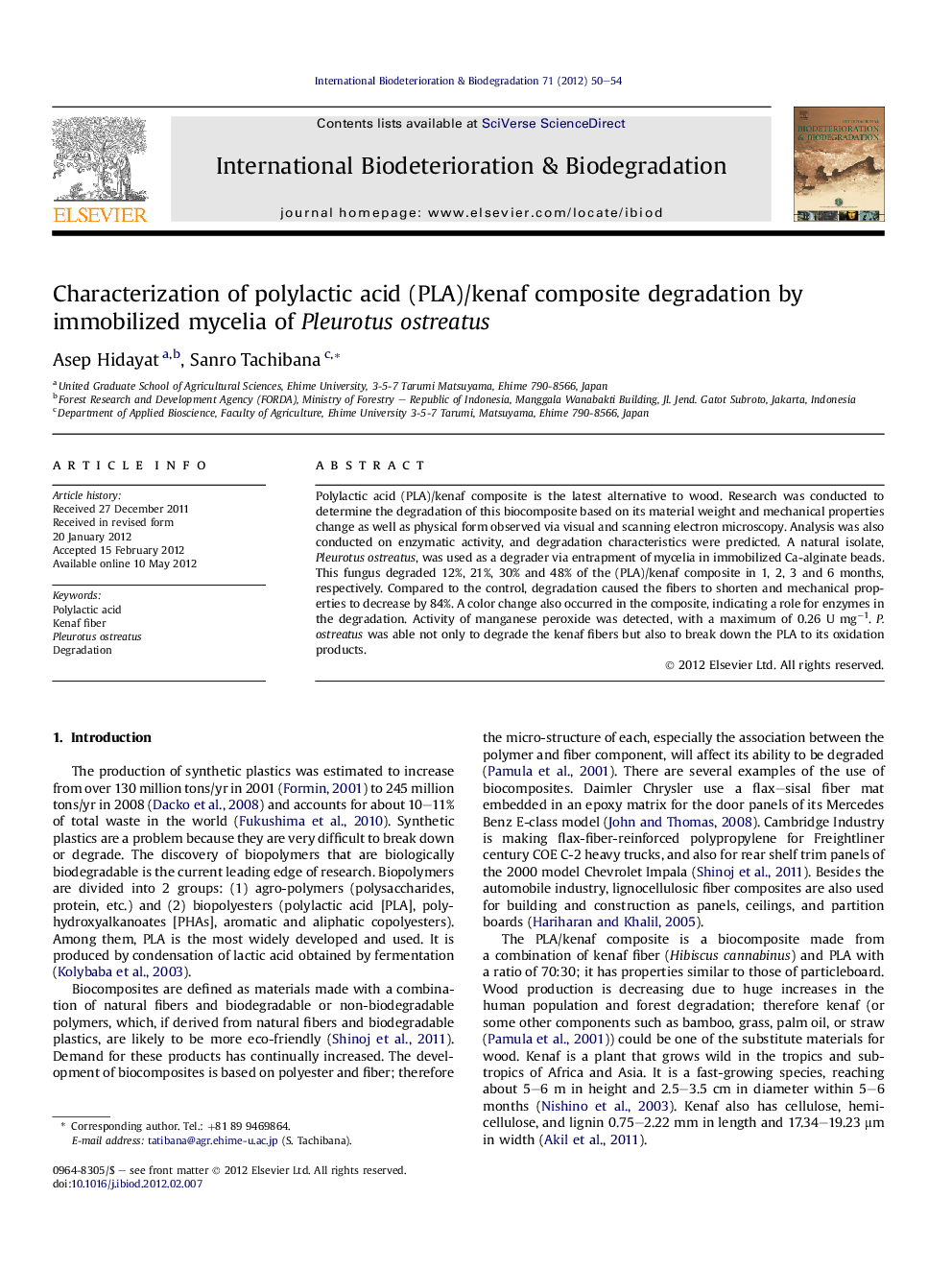| Article ID | Journal | Published Year | Pages | File Type |
|---|---|---|---|---|
| 4365118 | International Biodeterioration & Biodegradation | 2012 | 5 Pages |
Polylactic acid (PLA)/kenaf composite is the latest alternative to wood. Research was conducted to determine the degradation of this biocomposite based on its material weight and mechanical properties change as well as physical form observed via visual and scanning electron microscopy. Analysis was also conducted on enzymatic activity, and degradation characteristics were predicted. A natural isolate, Pleurotus ostreatus, was used as a degrader via entrapment of mycelia in immobilized Ca-alginate beads. This fungus degraded 12%, 21%, 30% and 48% of the (PLA)/kenaf composite in 1, 2, 3 and 6 months, respectively. Compared to the control, degradation caused the fibers to shorten and mechanical properties to decrease by 84%. A color change also occurred in the composite, indicating a role for enzymes in the degradation. Activity of manganese peroxide was detected, with a maximum of 0.26 U mg−1. P. ostreatus was able not only to degrade the kenaf fibers but also to break down the PLA to its oxidation products.
► Pleurotus ostreatus has the ability to degrade Polylactic acid (PLA)/kenaf composites. ► PLA/kenaf composite showed a loss of weight (48%) and mechanical properties (84%). ► FT-IR analysis and enzymes production proved that degradation occurred via oxidation reactions. ► This is the first evidence in the involvement of P. ostreatus in the degradation of PLA/kenaf composite.
